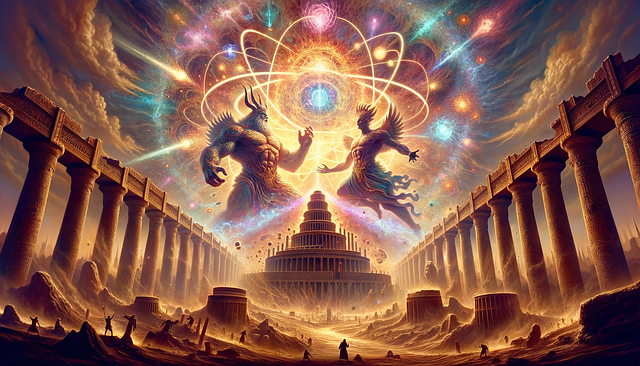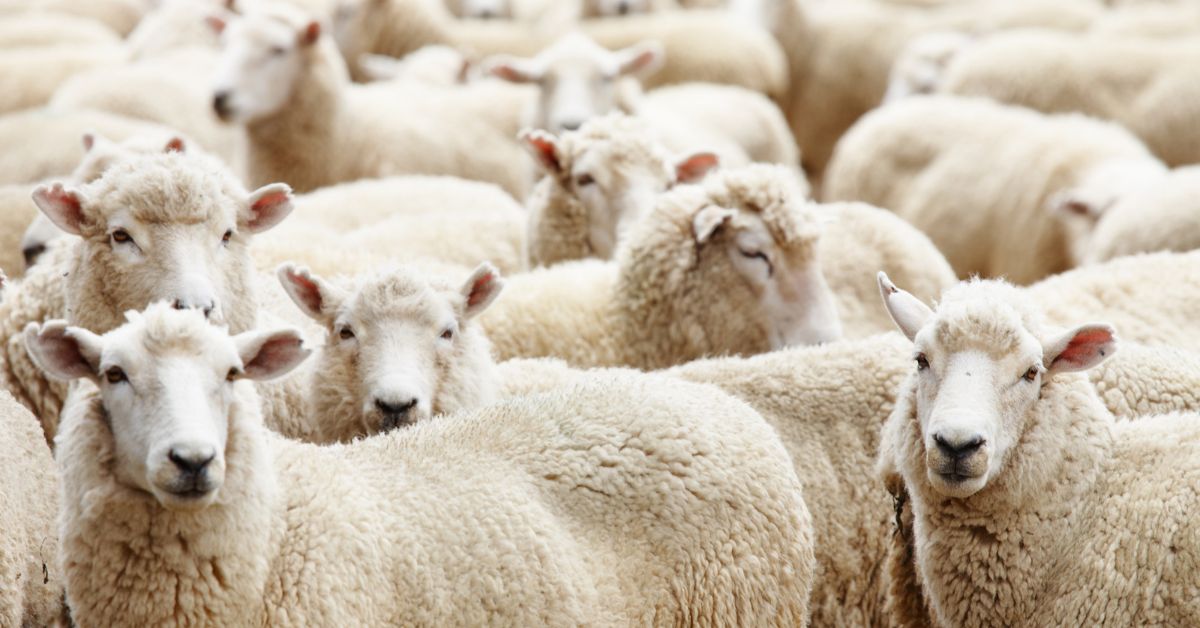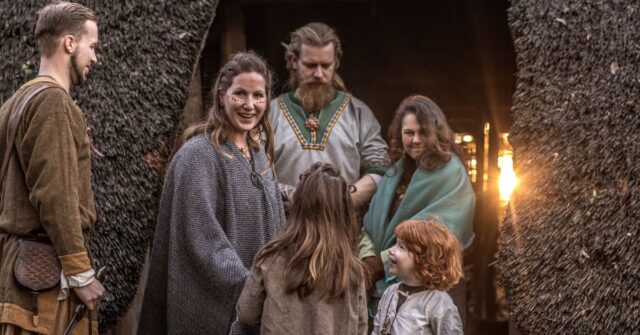The Vikings are well-known for their seafaring exploits, but their domestic lives were equally fascinating.
Pets and domesticated animals played crucial roles in their society, serving not only practical purposes but also holding significant cultural and symbolic importance.
This comprehensive guide delves into the various animals that were integral to Viking life, exploring their roles, breeds, and mythological significance.
Introduction to Viking Pets and Domesticated Animals
Animals were an essential part of Viking life, aiding in daily tasks, providing companionship, and featuring prominently in mythology and cultural practices.
From dogs and cats to more exotic pets like bears and birds, Vikings had a deep connection with the animals around them.

Historical Context of Viking Domestication
During the Viking Age, which spanned from approximately 793 to 1066 AD, animals were indispensable. Vikings relied on domesticated animals for agriculture, hunting, transportation, and protection.
This era saw a unique blend of practical and symbolic uses for pets and livestock.
Overview of Common Viking Pets
The most common Viking pets included dogs and cats, but they also kept birds, bears, and farm animals. Each type of animal had a specific role, whether in daily life or in the rich tapestry of Norse mythology.
Dogs in Viking Society
Dogs held a special place in Viking society, serving various roles from hunting and herding to companionship. They were highly valued and often depicted in Viking art and literature.
Importance of Dogs in Viking Culture
Dogs were more than just pets; they were companions, protectors, and status symbols. A Viking’s wealth and social status could often be inferred by the number and breed of dogs they owned.
Common Viking Dog Breeds
Several dog breeds were prevalent during the Viking Age, each serving specific functions in hunting, herding, and guarding.
Norwegian Elkhound
The Norwegian Elkhound was a versatile hunting dog, known for its bravery and agility. These dogs were used to hunt large game like elk and bear, making them invaluable to Viking hunters.

Swedish Elkhound
Similar to its Norwegian counterpart, the Swedish Elkhound was a spitz-type dog bred for hunting. It was larger and used for hunting moose and other large animals.
Karelian Bear Dog
The Karelian Bear Dog was prized for its fearlessness and ability to hunt large predators. This breed was known for its loyalty and courage, essential traits for Viking hunters.
Icelandic Sheepdog
The Icelandic Sheepdog, a smaller herding breed, was brought to Iceland by Viking settlers. Known for its agility and cheerfulness, it was essential for managing livestock in the rugged Icelandic terrain.
Roles of Dogs in Viking Life
Dogs were integral to Viking daily life, performing various tasks that were crucial for survival and prosperity.
Hunting Dogs
Hunting dogs were indispensable to the Vikings, assisting in tracking and capturing game. Their keen senses and trained abilities made them essential for providing food and resources.
Herding Dogs
Herding dogs helped manage livestock, ensuring that sheep and cattle were kept safe and organized. Their intelligence and agility made them perfect for this role.
Mythological Significance of Dogs
In Norse mythology, dogs were often depicted as guardians and guides in the afterlife, reflecting their importance in both life and death.

Garm and Fenrir in Norse Mythology
Garm, often described as the best of hounds, was said to guard the gates of Hel, the realm of the dead. Fenrir, another mythological canine, was feared for its role in Ragnarök, the end of the world in Norse legend.
Dogs in Viking Burial Practices
Archaeological findings show that dogs were often buried with their masters, indicating their significance in Viking society.
This practice suggests a belief that the bond between humans and dogs extends into the afterlife.
Cats in the Viking Age
Cats were valued by the Vikings for their pest control abilities and their connection to Norse mythology, particularly with the goddess Freyja.
The Role of Cats in Viking Homes
Cats were kept primarily to control pests, protecting food stores from rodents. Their presence in Viking homes was both practical and symbolic.
Common Cat Breeds and Their Uses
While specific breeds are less documented, cats were known for their utility and occasional use for their fur.
Huldrekat: The Hiding Cat
The Huldrekat, or “hiding cat,” was named after the huldra, or forest spirits. These cats were believed to have mystical qualities and were sometimes associated with witchcraft.
Mythological and Folkloric Significance of Cats
Cats were sacred to Freyja, the goddess of love and fertility, who was often depicted with a chariot drawn by cats. This association made cats revered in Viking culture.

Other Domesticated Animals in Viking Society
Beyond dogs and cats, Vikings kept a variety of other animals that played crucial roles in their daily and spiritual lives.
Keeping Bears as Pets
Bears were occasionally kept as pets, particularly bear cubs, which were raised domestically before becoming too dangerous.
Role of House Bears
House bears were initially kept for their novelty and companionship, but they often became nuisances due to their size and strength, leading to regulations against keeping them.
Regulations on Bear Ownership
Due to the potential danger posed by domesticated bears, laws were enacted to control their ownership. Fines were imposed for damage caused by escaped bears.
Birds in Viking Homes
Birds, especially raptors like hawks and falcons, were kept by the nobility for hunting and as symbols of status.
Hawks and Falcons: Pets of the Nobility
Only the wealthiest Vikings could afford to keep birds of prey, which were used in falconry and admired for their hunting prowess.

Symbolic Importance of Peacocks
Peacocks were rare and valued for their beauty, often kept by wealthy Vikings to signify their status and wealth.
Farm Animals and Their Roles
Farm animals were the backbone of Viking agriculture, providing food, materials, and economic stability.
Cattle: Symbols of Wealth and Sustenance
Cattle were vital for their meat, milk, and hides. They were also symbols of wealth, often used as currency in Viking society.
Sheep: Providers of Wool and Meat
Sheep were essential for their wool, used to make clothing and textiles, and their meat, which was a staple in the Viking diet.
Pigs: Essential for the Viking Diet
Pigs were valued for their meat, which was a major part of the Viking diet. They were easy to raise and provided a reliable source of protein.
Chickens: Reliable Source of Eggs and Meat
Chickens were kept for their eggs and meat, providing an easy and efficient source of nutrition for Viking households.
The Cultural and Symbolic Role of Animals in Viking Society
Animals in Viking culture were more than just functional; they held deep symbolic meanings and were integral to Norse mythology.
Animals in Norse Mythology
Many animals featured prominently in Norse mythology, representing various virtues and powers. They were often depicted alongside gods and heroes, highlighting their significance.

Symbolic Representations of Animals
Animals were symbols of strength, courage, and other virtues. Their depictions in art and mythology served to inspire and guide Viking warriors and farmers alike.
Bears as Symbols of Ferocity
Bears were admired for their strength and ferocity, qualities that Vikings sought to emulate. They were often associated with bravery and power in battle.
Other Animals as Symbols of Strength and Leadership
Various animals, such as wolves and ravens, were also symbolic of leadership and cunning. These traits were highly valued in Viking culture.
Conclusion: The Legacy of Viking Pets and Domesticated Animals
Understanding the relationship between Vikings and their animals provides insight into their daily lives, cultural practices, and societal values. The legacy of these pets and domesticated animals continues to influence Scandinavian culture today.
Understanding the Viking Relationship with Animals
The Vikings’ bond with their animals was multifaceted, encompassing practical, emotional, and spiritual dimensions. This deep connection is evident in their myths, burial practices, and daily life.
The Lasting Impact on Scandinavian Culture
The legacy of Viking pets and domesticated animals extends far beyond their historical period. Modern Scandinavian societies still reflect many of the values and practices associated with these animals.
The breeds developed during the Viking Age, such as the Icelandic Sheepdog and Norwegian Elkhound, remain popular today.
Moreover, the symbolic significance of animals in Norse mythology continues to influence contemporary cultural expressions, from literature and art to modern pagan practices.











